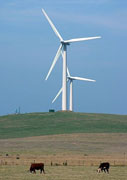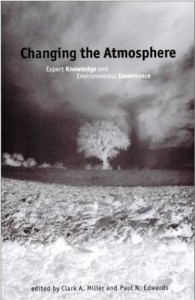Program on Science, Technology and Society at HarvardHarvard Kennedy School of Government | Harvard University |
||||||||
|
|

Modernity’s Powerful ImaginationsImplicit in the notion of sociotechnical imaginaries is the assumption that some actors and institutions have more power than others to project their imaginations and to get others to buy into them, whether voluntarily, as through consumer behavior, or through discipline and governmentality, as in the work of states and statelike actors. Studies at the intersection of science and technology studies and political science investigate how such powerful imaginaries are constructed and how they gain and retain power. 
John Desmond Bernal. 1939. The Social Function of Science. G. Routledge & Sons. This pathbreaking work by the famed Cambridge-trained physicist and Marxist, who was also one of the founders of modern social studies of science, conveys a powerful imagination of the potentially transforming role that science and technology could play to improve human lives in a planned socialist state. Bernal attributed the comparative failure of British science to achieve such transformation to the debilitating effects of capitalism, coupled to imperialism and militarism. Science for Bernal was necessarily a social activity, destined to come into its own when coupled to socialism. “The task which the scientists have undertaken—the understanding and control of nature and of man himself—is merely the conscious expression of human society. . . In its endeavour, science is communism.” (p. 415)

Don K. Price. 1965. The Scientific Estate. Harvard. Prompted by concerns about the implications of the rising power of science for democracy, this book by a political scientist and dean of Harvard’s policy school imagines a way to link science to politics without allowing science to slip outside democratic control. Key to Price’s vision is a separation of functions among four estates: scientists, professionals, administrators, and politicians. He both believed in and argued for strict functional separation. “The union of the political and scientific estates is not like a partnership, but a marriage. It will not be improved if the two become like each other, but only if they respect each other’s quite different needs and purposes.”

Antonio Gramsci. 1971. Selections from the Prison Notebooks of Antonio Gramsci, edited and translated by Q. Hoare and G. Nowell Smith. Lawrence and Wishart. In all his writings, Gramsci was centrally interested in how ruling classes come to rule over others, often without needing to use direct force. He explained this phenomenon through the notion of “cultural hegemony,” the process by which subjected people come to accept the ruling class’s ideas—which, of course, favor that class’s continued rule—as “common sense.” Newspapers, radio, and other technological media, typically owned and controlled by the rulers, play a central role in propagating these ideas. The resulting common sense of hegemony limits what people are able to see as possible in the present and the future. It sets the bounds of what can be imagined as possible in technology, society, and the economy. 
Yaron Ezrahi. 1990. The Descent of Icarus: Science and the Transformation of Contemporary Democracy. Harvard. This exceptionally original synthesis of science and technology studies and political theory contributes to the genealogy of sociotechnical imaginaries at two levels. First, Ezrahi offers a co-productionist account of modernity as a sociotechnical imaginary, documenting the joint evolution of science and democracy, both unseating centralized power through similar processes of demonstration, evidence, and witnessing. Second, the book exemplifies a theoretical approach to the study of imaginaries—one that relates the rise of science and technology to transformations in social imaginaries of governance, particularly of democracy as a form of political life. 
Bruno Latour. 1993. We have Never Been Modern. Harvard. In this influential essay, Latour skirts any attempt to define modernity in temporal terms, or as an achieved state, and instead dwells on the hybrid networks that unite humans and non-humans in relations of delegation and representation. He suggests that the perceived dichotomy that separates the world into natural and social realms (the “modern constitution”) was a work of collective imagination. In this sense, quite different from Ezrahi’s, modernity itself can be seen as a lived and apprehended sociotechnical imaginary. 
Michel Foucault. 2000. “Governmentality.” In The Essential Works of Foucault, 1954-1984, vol. 3: Power, edited by James D. Faubion. New Press. Though not focused on science or technology in a narrow sense, Foucault’s entire oeuvre, and particularly his concept of governmentality, connect the purposes of modern states, their techniques of governance, and their relations with subjects in ways that have proved enormously generative for STS scholars. Key elements of Foucault’s work in relation to sociotechnical imaginaries include his emphasis on life and bodies as objects of government by states and other actors, and his insights into the creation and standardization of populations as essential to the art of governing. The notion of governmentality also relates to the distribution of power among different institutions—the state, the church, guilds/corporations, families, etc.—and how these institutions participate in creating the political or governable subject. Sheila Jasanoff. 2001. “Image and Imagination.” In Clark Miller and Paul Edwards, eds. Changing the Atmosphere: Expert Knowledge and Environmental Governance (pp. 309-337). MIT Press. 
Sheila Jasanoff. 2004. “Heaven and Earth.” In Jasanoff and Martello, eds. Earthly Politics: Local and Global in Environmental Governance (pp. 31-52). MIT Press. In this pair of articles, Jasanoff explores the impact of one nation’s technological imagination, the U.S. Apollo space program culminating in the 1969 moon landing, on the emergence of a global environmental movement. She traces the circulation of an image, the famous “pale blue dot” showing the Earth in space, and its uptake into political and policy discourse. These articles draw connections between visual and political imaginations while demonstrating the considerable work that needs to be done to enroll global multitudes into particular ways of seeing and imagining. Sheila Jasanoff. 2005. Designs on Nature: Science and Democracy in Europe and the United States. Princeton University Press. This book compares the development of biotechnology regulation in three Western countries over about a quarter century, from 1980 to 2005. Though not centrally an exploration of national sociotechnical imaginaries, the book discusses the divergent ways in which British, German, and U.S. policy framed the future risks and benefits of biotechnology in this period. It relates those framings to disparate, but deeply held, commitments to science, reason, and democratic governance in each nation. Felt, Wynne, et al. 2007. Taking European Knowledge Society Seriously. European Commission. Full report available here. This report by the Expert Group on Science and Governance to the Directorate–General for Research of the European Commission dissects prevailing European views of science and innovation policy with STS lenses to show how dominant EU policy frameworks incorporate tacit, unacknowledged imaginations of risk, ethics, and publics. The report uses “narratives” rather than “imaginaries,” but the former word here does much the same analytic work as the latter. |
|||||||






